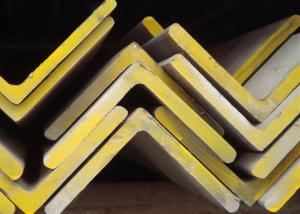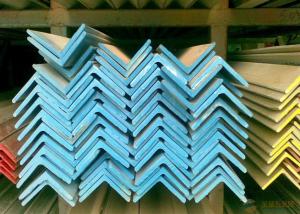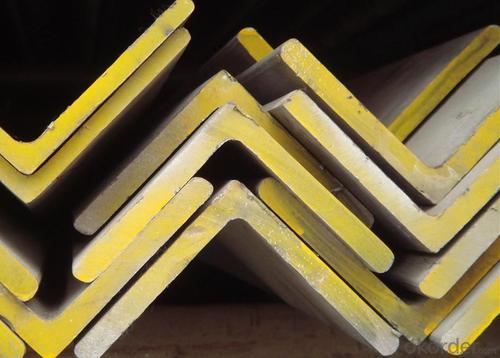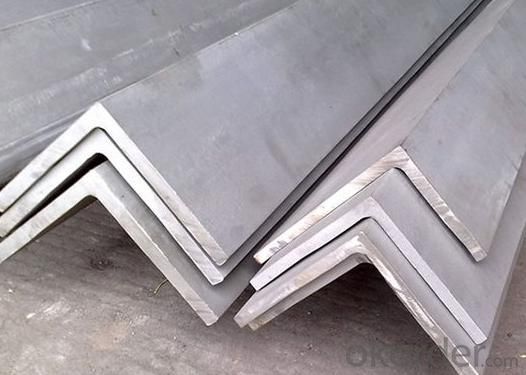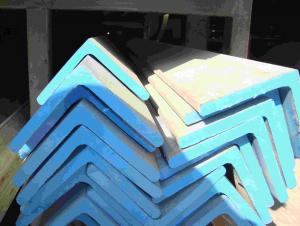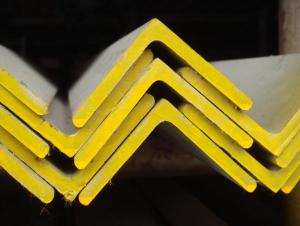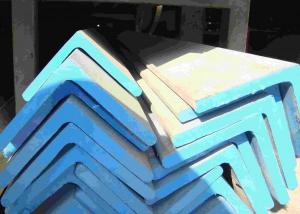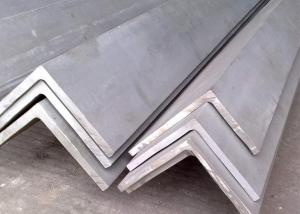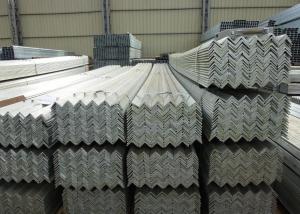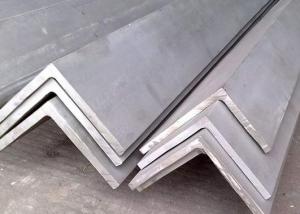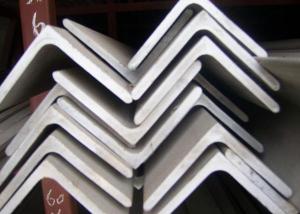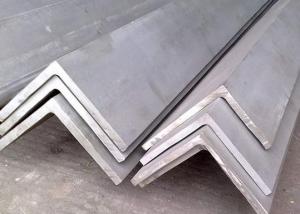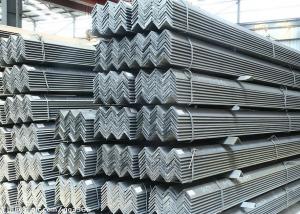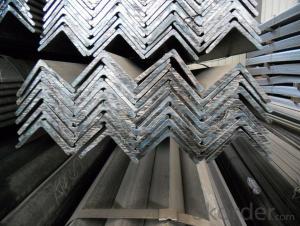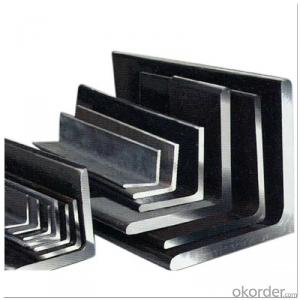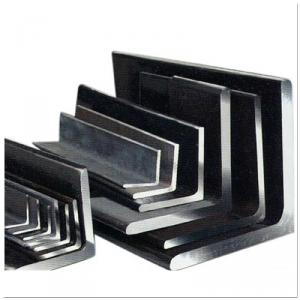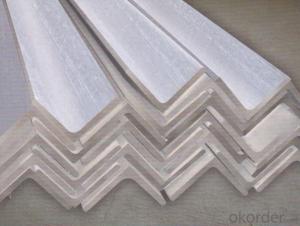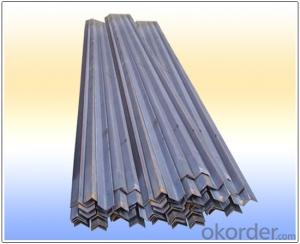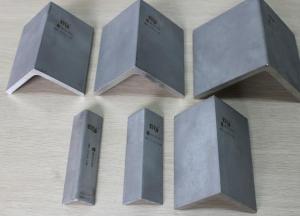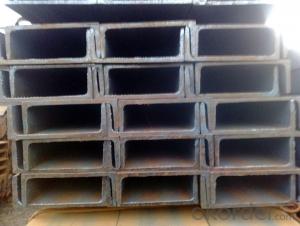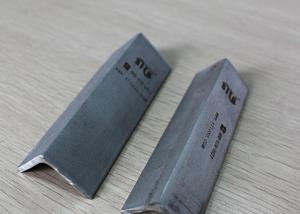Best Quality for 304 Stainless Steel Angles
- Loading Port:
- China Main Port
- Payment Terms:
- TT or LC
- Min Order Qty:
- 1 Ton m.t.
- Supply Capability:
- 500 Tons Per Month m.t./month
OKorder Service Pledge
OKorder Financial Service
You Might Also Like
Stainless Steel Angles
General Information of Stainless Steel Angles
1. Grade: SS200, 300,400 series
2. Size: 25×25×3 mm-100×100×10mm
3. Process: HRAP
4. Length: 2-6m
5. Shape: Equal
6. Delivery: within 20 days
7. MOQ: 1 ton
8. Certificate: ISO 9001:2008, SGS
9. Package: Standard Export Packing, or put into wooden boxes according to your requirement
10. Application: Construction, Marine, Industry and so on.
Specification of Stainless Steel Angles
Name | Stainless Steel Angles | |||||
Standard | ASTM A554, A312, A249, A269 and A270 | |||||
Material Grade | 304,316,201,202, 316L,430 | |||||
Length | 6m or as customers' request | |||||
Tolerance | a) Thickness: +/-0. 15mm | |||||
b) Length: +/-4. 5mm - 0mm | ||||||
Surface | 180G, 320G, 400G Satin / Hairline(Matt Finish, Brush, Dull Finish) 400G, 500G, 600G or 800G Mirror finish | |||||
Application | Decoration construction, upholstery, industry instruments | |||||
Test | Squash test, Extended test, Water pressure test, Crystal rot test, Heat treatment, NDT | |||||
Chemical Composition of Material | Composition Material | 201 | 202 | 304 | 316 | 430 |
C | ≤0.15 | ≤0.15 | ≤0.08 | ≤0.08 | ≤0.12 | |
Si | ≤1.00 | ≤1.00 | ≤1.00 | ≤1.00 | ≤1.00 | |
Mn | 5.5-7.5 | 7.5-10 | ≤2.00 | ≤2.00 | ≤1.00 | |
P | ≤0.06 | ≤0.06 | ≤0.045 | ≤0.045 | ≤0.040 | |
S | ≤0.03 | ≤0.03 | ≤0.030 | ≤0.030 | ≤0.030 | |
Cr | 16-18 | 17-19 | 18-20 | 16-18 | 16-18 | |
Ni | 3.5-5.5 | 4-6 | 8-10.5 | 10-14 | ||
Mo | 2.0-3.0 | |||||
Mechanical Property | Material Item | 201 | 202 | 304 | 316 | |
Tensile Strength | ≥535 | ≥520 | ≥520 | ≥520 | ||
Yield Strength | ≥245 | ≥205 | ≥205 | ≥205 | ||
Extension | ≥30% | ≥30% | ≥35% | ≥35% | ||
Hardness (HV) | <253 | <253 | <200 | <200 | ||
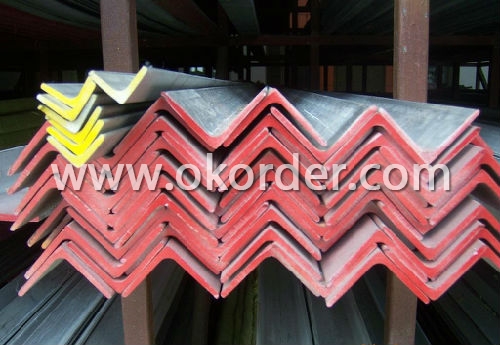
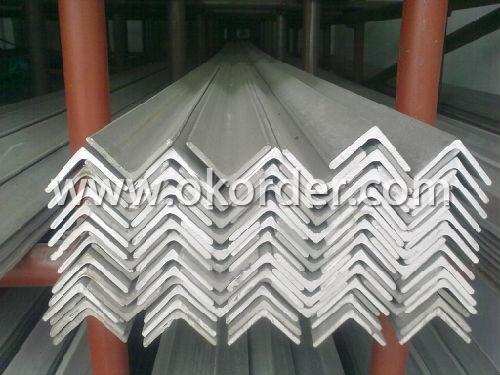
- Q: Are stainless steel angles suitable for fencing?
- Indeed, stainless steel angles are an excellent choice for fencing purposes. Their durability, strength, and resistance to corrosion make stainless steel a favored option when it comes to fencing materials. In addition, stainless steel angles serve as a robust framework for fences, capable of withstanding even the harshest weather conditions, which makes them perfect for outdoor applications. Moreover, stainless steel's sleek and contemporary look enhances the aesthetic charm of the fence. Whether utilized in residential, commercial, or industrial fencing projects, stainless steel angles guarantee reliability and longevity.
- Q: Can stainless steel angles be used in staircase construction?
- Yes, stainless steel angles can be used in staircase construction. Stainless steel is a durable and corrosion-resistant material, making it an ideal choice for stairs that are exposed to moisture or other environmental factors. Stainless steel angles can be used to construct the framework of the staircase, providing stability and support. Additionally, stainless steel angles can be easily welded or bolted together, allowing for flexibility in design and easy installation. The sleek and modern appearance of stainless steel also adds an aesthetic appeal to staircase construction. Overall, stainless steel angles are a practical and attractive option for use in staircase construction.
- Q: What is the impact strength of stainless steel angles?
- The impact strength of stainless steel angles can vary depending on various factors such as the grade of stainless steel used, the manufacturing process, and the specific conditions and environment in which they are being used. Generally, stainless steel angles have a high impact strength due to the inherent properties of stainless steel. Stainless steel is known for its excellent toughness and resistance to impact, making it a suitable material for applications where impact resistance is important. The impact strength of stainless steel angles is typically higher than that of other materials such as carbon steel or aluminum. This is because stainless steel contains a higher percentage of chromium, which enhances its hardness and toughness. Additionally, stainless steel angles can be further strengthened through heat treatment processes such as annealing or quenching and tempering, which can further improve their impact resistance. It is important to note that the specific impact strength of stainless steel angles can vary depending on the specific grade of stainless steel used. Stainless steel is available in different grades, each with varying levels of impact strength. Typically, higher-grade stainless steels such as 316 or 304 exhibit better impact resistance compared to lower-grade stainless steels. In summary, stainless steel angles have a high impact strength due to the inherent properties of stainless steel. The specific impact strength can vary depending on the grade of stainless steel used and other factors, but in general, stainless steel angles are known for their excellent toughness and resistance to impact.
- Q: What are the different types of edge finishes for slotted stainless steel angles?
- Slotted stainless steel angles provide a variety of edge finishes that cater to both functional and aesthetic needs. 1. The plain edge is the most basic finish, offering a straightforward, untreated cut. It is commonly chosen for its clean and minimalist appearance. 2. A deburred edge eliminates any sharp edges or burrs that may arise during the cutting process. This finish is crucial for safety, as it prevents injuries caused by rough edges. 3. The rounded edge is another popular option, which involves smoothing out the angle's sharp corners. This not only enhances the visual appeal but also ensures a more comfortable and safe handling experience. 4. A beveled edge is achieved by cutting a sloping angle along the edge, adding a decorative touch or providing a polished look to the angle. It also facilitates fitting into other components or structures. 5. For a luxurious and professional appearance, a polished edge involves buffing and polishing the stainless steel angle's edge to create a smooth and glossy surface. This finish is often chosen for its decorative value. These various edge finishes for slotted stainless steel angles offer a wide range of options to accommodate diverse applications and design preferences. The choice of finish will depend on factors such as the angle's intended use, desired aesthetics, and safety regulations.
- Q: How do I calculate the weight of a stainless steel angle?
- In order to determine the weight of a stainless steel angle, one must possess knowledge of the angle's dimensions and the density of stainless steel. Initially, measure the angle's length, width, and thickness. These dimensions will be expressed in either inches or millimeters. Subsequently, ascertain the density of stainless steel. The density of stainless steel varies depending on the specific type, but on average, it is approximately 8 grams per cubic centimeter or 8000 kilograms per cubic meter. To calculate the volume of the stainless steel angle, multiply the length, width, and thickness together. If the dimensions are provided in inches, convert them to centimeters by multiplying by 2.54. If the dimensions are in millimeters, divide by 10 to obtain centimeters. Thereafter, transform the volume to cubic meters by dividing by 1,000,000 if the dimensions are in centimeters. If the dimensions are already in meters, this step can be omitted. Lastly, multiply the volume by the density to determine the weight of the stainless steel angle. Ensure that the units remain consistent - if the density is in kilograms per cubic meter and the volume is in cubic meters, the resulting weight will be in kilograms. If grams per cubic centimeter were used for density, the weight will be in grams. For instance, let us consider a stainless steel angle with dimensions of 10 inches in length, 2 inches in width, and 0.5 inches in thickness. Initially, convert the dimensions to centimeters: 10 inches = 25.4 cm, 2 inches = 5.08 cm, 0.5 inches = 1.27 cm. Next, calculate the volume: 25.4 cm x 5.08 cm x 1.27 cm = 162.9 cm³. Since the density of stainless steel is approximately 8000 kg/m³, divide the volume by 1,000,000 to obtain cubic meters: 162.9 cm³ / 1,000,000 = 0.0001629 m³. Finally, multiply the volume by the density: 0.0001629 m³ x 8000 kg/m³ ≈ 1.3032 kg. Therefore, the weight of the stainless steel angle is approximately 1.3032 kilograms.
- Q: Can stainless steel angles be used in agricultural machinery?
- Yes, stainless steel angles can be used in agricultural machinery. Stainless steel is a highly durable and corrosion-resistant material, making it suitable for various applications in the agricultural industry. Stainless steel angles can be used in the construction of machinery frames, supports, brackets, and other structural components. The excellent strength and resistance to rust and corrosion make stainless steel angles ideal for withstanding the harsh conditions and exposure to moisture and chemicals commonly found in agricultural environments. Additionally, stainless steel is easy to clean and maintain, ensuring a longer lifespan for the machinery.
- Q: How do stainless steel angles contribute to sustainability?
- Stainless steel angles contribute to sustainability in various ways. Firstly, stainless steel is a highly durable material that has a long lifespan. Unlike other materials, stainless steel angles do not degrade or corrode easily, making them less likely to end up in landfills. This longevity reduces the need for frequent replacements and conserves resources. Additionally, stainless steel is a recyclable material. When stainless steel angles reach the end of their life cycle, they can be easily recycled and transformed into new products. Recycling stainless steel requires significantly less energy compared to producing it from raw materials, resulting in reduced carbon emissions and resource consumption. Moreover, stainless steel is known for its resistance to rust and corrosion. This property eliminates the need for protective coatings or treatments, reducing the use of harmful chemicals and minimizing the environmental impact during the manufacturing process. Another aspect contributing to sustainability is the fact that stainless steel is non-toxic and hygienic. This makes it a suitable choice for various applications, especially in the food and healthcare industries, where cleanliness and safety are paramount. By using stainless steel angles in such applications, we can ensure they are free from contaminants and harmful substances, promoting a healthier environment. Furthermore, stainless steel is an excellent option for outdoor applications due to its resistance to extreme weather conditions and UV radiation. This characteristic enables stainless steel angles to withstand exposure to sunlight, rain, and other environmental factors without deteriorating. Consequently, this reduces the need for frequent maintenance or replacements, resulting in cost savings and a reduced environmental footprint. In summary, stainless steel angles contribute to sustainability by their durability, recyclability, resistance to corrosion, non-toxicity, and suitability for outdoor applications. By choosing stainless steel angles, we can promote a more sustainable future by reducing waste, conserving resources, minimizing environmental impacts, and ensuring the safety and hygiene of various industries.
- Q: What is the maximum weight capacity for stainless steel angles?
- The maximum weight capacity for stainless steel angles can vary depending on the specific dimensions and specifications of the angle. Generally, stainless steel angles have a high strength-to-weight ratio, which allows them to support significant loads. However, it is crucial to consider factors such as the length, thickness, and overall design of the angle when determining its maximum weight capacity. Consulting with a structural engineer or referring to industry standards and guidelines for stainless steel angles can provide more accurate information regarding their maximum weight capacity.
- Q: Can stainless steel angles be used in wastewater treatment plants?
- Yes, stainless steel angles can be used in wastewater treatment plants. Stainless steel is highly resistant to corrosion and can withstand the harsh and corrosive environment typically found in wastewater treatment plants. The angles are commonly used for structural support, as well as for the construction of tanks, pipes, and other equipment in these facilities. Stainless steel angles offer excellent strength and durability, making them suitable for heavy-duty applications in wastewater treatment plants. Additionally, stainless steel is also known for its hygienic properties, which is crucial in maintaining proper sanitation and preventing the growth of bacteria or other contaminants in these environments.
- Q: What are the different lengths of stainless steel angles available?
- Different applications and requirements are accommodated with stainless steel angles offered in various lengths. The lengths may differ depending on the manufacturer and the specific product line. Stainless steel angles commonly range from 6 feet (72 inches) to 20 feet (240 inches), with increments of 1 foot or 2 feet. Nonetheless, it is crucial to acknowledge that custom lengths can also be produced to cater to individual project requirements. Stainless steel angles serve as versatile structural components in construction, manufacturing, and various industries, providing strength, durability, and resistance against corrosion.
1. Manufacturer Overview
| Location | Zhejiang, China |
| Year Established | 2010 |
| Annual Output Value | above US$16 million |
| Main Markets | East Asia, Middle East. |
| Company Certifications |
2. Manufacturer Certificates
| a) Certification Name | |
| Range | |
| Reference | |
| Validity Period |
3. Manufacturer Capability
| a) Trade Capacity | |
| Nearest Port | Shanghai |
| Export Percentage | |
| No.of Employees in Trade Department | above 10 people |
| Language Spoken: | English, Chinese |
| b) Factory Information | |
| Factory Size: | about 30000 square meter |
| No. of Production Lines | above 7 |
| Contract Manufacturing | OEM Service Offered |
| Product Price Range | Average |
Send your message to us
Best Quality for 304 Stainless Steel Angles
- Loading Port:
- China Main Port
- Payment Terms:
- TT or LC
- Min Order Qty:
- 1 Ton m.t.
- Supply Capability:
- 500 Tons Per Month m.t./month
OKorder Service Pledge
OKorder Financial Service
Similar products
Hot products
Hot Searches
Related keywords
